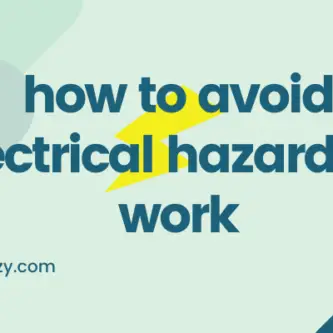Hospitals are complex facilities with a variety of electrical systems and equipment, and electrical safety is essential to ensure the well-being of patients, staff, and visitors.
An electrical safety audit is a thorough examination of electrical systems and equipment to identify potential hazards and ensure compliance with applicable codes and standards.
In this article, we will provide a comprehensive electrical safety audit checklist for hospitals to help ensure the safety of everyone in the facility.
General Electrical Safety Guidelines
Before we dive into the checklist, it’s important to review some general electrical safety guidelines for hospitals.
These guidelines include:
- Only qualified personnel should perform electrical work in hospitals.
- All electrical equipment should be properly grounded and installed according to applicable codes and standards. For more information read my article The Importance of Grounding and Ponding.
- All electrical panels and breakers should be properly labeled and accessible.
- All electrical cords and plugs should be in good condition and not damaged.
- Regular maintenance and inspections of electrical systems and equipment should be conducted.
- All staff should be trained in electrical safety procedures and emergency response protocols.
Electrical Safety Audit Checklist for Hospitals
The following checklist covers various aspects of electrical safety in hospitals:
- Electrical Panel Inspection
- Ensure all panels are labeled with proper identification.
- Verify that there is proper clearance around panels.
- Check for any signs of damage or overheating on breakers or other components.
- Check for loose connections, frayed wires or other signs of wear.
- Ensure that all panels are secure and not accessible to unauthorized personnel.
- Electrical Equipment Inspection
- Verify that all equipment is grounded and installed according to applicable codes and standards.
- Check for signs of damage or wear on cords, plugs and other components.
- Ensure that all emergency shutoff switches are clearly marked and easily accessible.
- Verify that all medical equipment is on a dedicated circuit and not shared with other equipment.
- Ensure that all equipment is properly maintained and regularly inspected.
- Lighting Inspection
- Verify that all lights are properly installed and functioning.
- Check for any signs of damage or wear on bulbs, fixtures or other components.
- Ensure that all emergency lighting is working properly.
- Check for any areas where lighting may be inadequate or insufficient.
- Surge Protection Inspection
- Verify that all surge protectors are installed and functioning properly.
- Check for any signs of damage or wear on surge protectors or other components.
- Ensure that all critical equipment is protected by a surge protector.
- Grounding Inspection
- Verify that all electrical equipment and systems are properly grounded.
- Check for any signs of wear or damage on grounding wires or other components.
- Ensure that all grounding systems are properly installed and functioning.
- Emergency Response Inspection
- Verify that all emergency response protocols are in place and clearly posted.
- Ensure that all staff are trained in emergency response procedures.
- Check for any deficiencies in emergency lighting, backup power or other emergency systems.
- Verify that all emergency shutoff switches are clearly marked and easily accessible.
Conclusion
An electrical safety audit is essential for hospitals to ensure the safety of everyone in the facility.
By following this comprehensive checklist, hospitals can identify potential hazards and ensure compliance with applicable codes and standards.
Remember, electrical safety is everyone’s responsibility, and regular maintenance and inspections are crucial to prevent accidents and ensure a safe environment for all.

